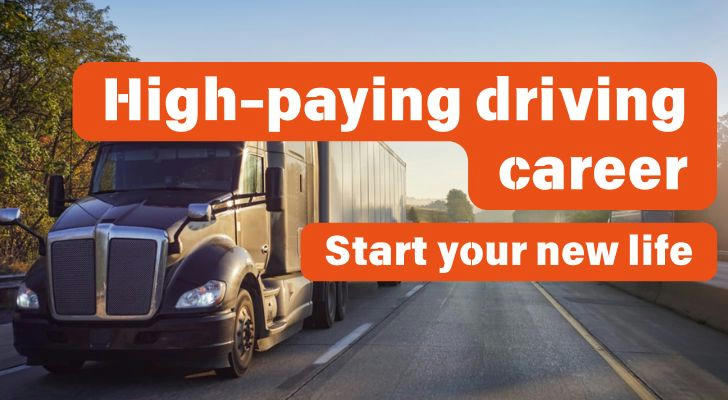CDL Courses: Your Beginner's Guide to a High-Paying Driving Career
Have you ever imagined yourself driving a massive truck across open highways—while enjoying the perks of government grants and corporate sponsorships? Today, Commercial Driver’s License (CDL) courses are opening doors to high-paying careers like never before. This guide—backed by real data and real-world examples—breaks down everything you need to know: course content, training timelines, costs, success rates, employment outcomes, and potential risks. We'll also share actionable steps to help you launch your career in trucking with confidence.

Why CDL Courses Stand Out
Course Duration:
Most CDL courses run between 4 and 8 weeks. Accelerated programs may be shorter, while part-time or flexible options can take longer depending on your schedule and the training provider.
Course Content:
You'll get hands-on instruction in vehicle inspection, highway driving, defensive driving strategies, and securing loads. Safety and regulatory compliance are key focus areas throughout the program.
Financial Support: Government Funding and Corporate Scholarships
One of the biggest advantages of CDL training is the wide range of financial assistance available. Because truck drivers are essential to the economy, both government agencies and private companies offer funding to help new drivers get started.
Government Support:
Workforce Development Programs: Federal and state initiatives—like those under the Workforce Innovation and Opportunity Act (WIOA)—offer grants or low-interest loans to people who are unemployed or looking to change careers.
Local Community Programs: Some states fund CDL-specific training to address labor shortages in the transportation industry, especially in underserved areas.
Corporate Scholarships:
- Industry-Backed Training: Companies such as Prime Inc., Schneider National, and CRST International offer scholarship programs and tuition reimbursement. These programs not only lower your out-of-pocket expenses but also often lead to guaranteed employment after graduation.

By the Numbers: Duration, Costs, and Success Rates
Training Structure:
Reputable CDL programs balance classroom learning with real-world driving practice. Here's how the formats typically break down:
Accelerated Courses (4–6 weeks): Full-time programs with morning classroom sessions and afternoon driving practice.
Extended Courses (6–8 weeks): Designed for part-time students or those balancing work and study.
These programs are tailored to simulate actual driving conditions and prepare students for the demands of the job.
Training Costs:
CDL course prices vary depending on program length, facilities, and services included:
Typical Cost Range: $3,000–$7,000 for most programs, covering instruction, classroom materials, and behind-the-wheel experience.
Discounted and Sponsored Training: Eligible students can greatly reduce or even eliminate training costs through subsidies or company-sponsored contracts.
Success Metrics:
Pass Rates: Well-established schools report pass rates between 80% and 90%, thanks to comprehensive training and practice exams.
Job Placement Rates: With ongoing driver shortages, many schools report placement rates over 85%. Some corporate-sponsored programs even guarantee a job offer upon completion.
Real-Life Success Stories
Case Study 1: Government-Funded Turnaround
Take John, a former warehouse worker in Ohio. After enrolling in a subsidized CDL course through a local workforce program, he completed training in 5 weeks and passed his licensing test with ease. Within a month, he landed a job with a major trucking company—thanks to partnerships the school had with local employers. His story is just one example of how CDL training leads to real, immediate opportunities.
Case Study 2: Corporate Scholarship Success
Maria, from Texas, joined a 6-week program supported by CRST International. Her training school had a scholarship deal with the company that covered 80% of her tuition. After passing her CDL exam, she joined CRST and now enjoys a reliable job with competitive pay and benefits.

Risks and Realities of a Driving Career
While CDL training offers clear benefits, it’s important to consider the challenges that come with the job:
Accident Risk: Driving large trucks in varying weather and traffic conditions carries unavoidable risks—even with solid training and defensive driving skills.
Mental Health Concerns: Long hours, time away from home, and social isolation can lead to stress, loneliness, or fatigue. It's important to build healthy routines and coping strategies.
How to Get Started in CDL Training
1. Prepare Mentally and Physically:
Know what you're getting into. A driving career demands focus, endurance, and the ability to handle long periods on the road. Prioritize fitness and mental wellness from the start.
2. Research and Enroll:
Find a reputable CDL school that fits your schedule and budget. Look into funding options—scholarships, loans, or workforce programs—and begin the enrollment process.
3. Stay Informed and Connected:
Keep up with changes in industry regulations, technology, and driving best practices. Join online forums or local networks to learn from experienced drivers and mentors.
Final Thoughts
CDL training is more than just a skills course—it’s a gateway to a stable and rewarding career that keeps America moving. With the help of government funding and company sponsorships, this path is more accessible than ever. High pass rates, solid job placement, and the potential for long-term growth make it a smart choice for those willing to put in the effort.
